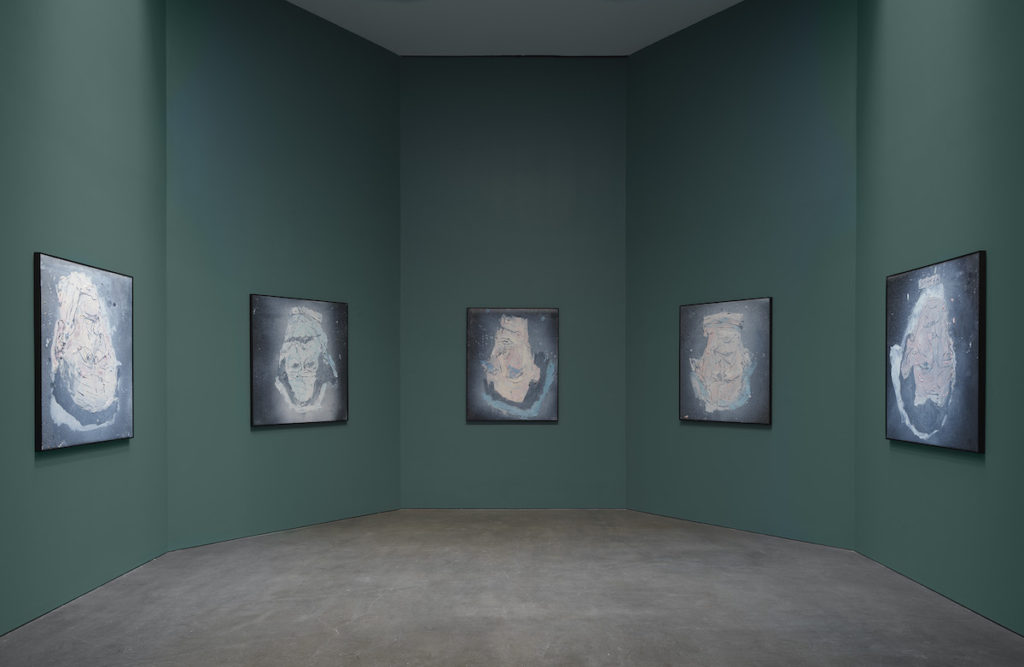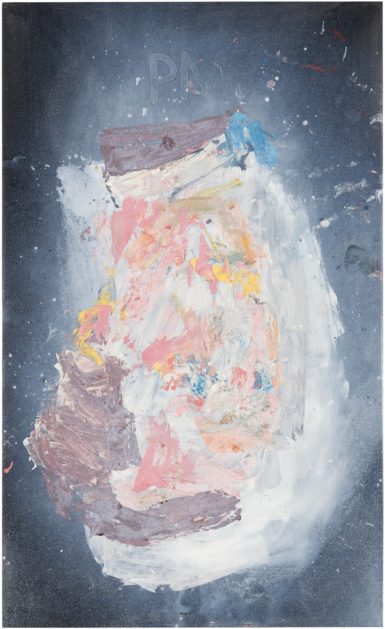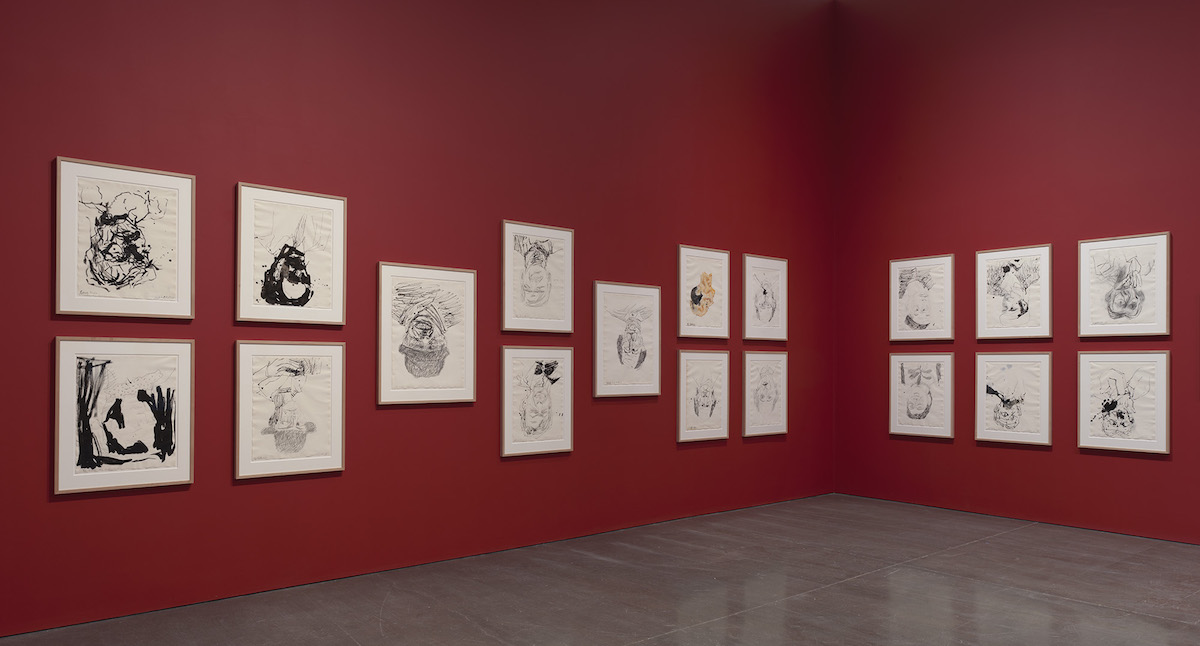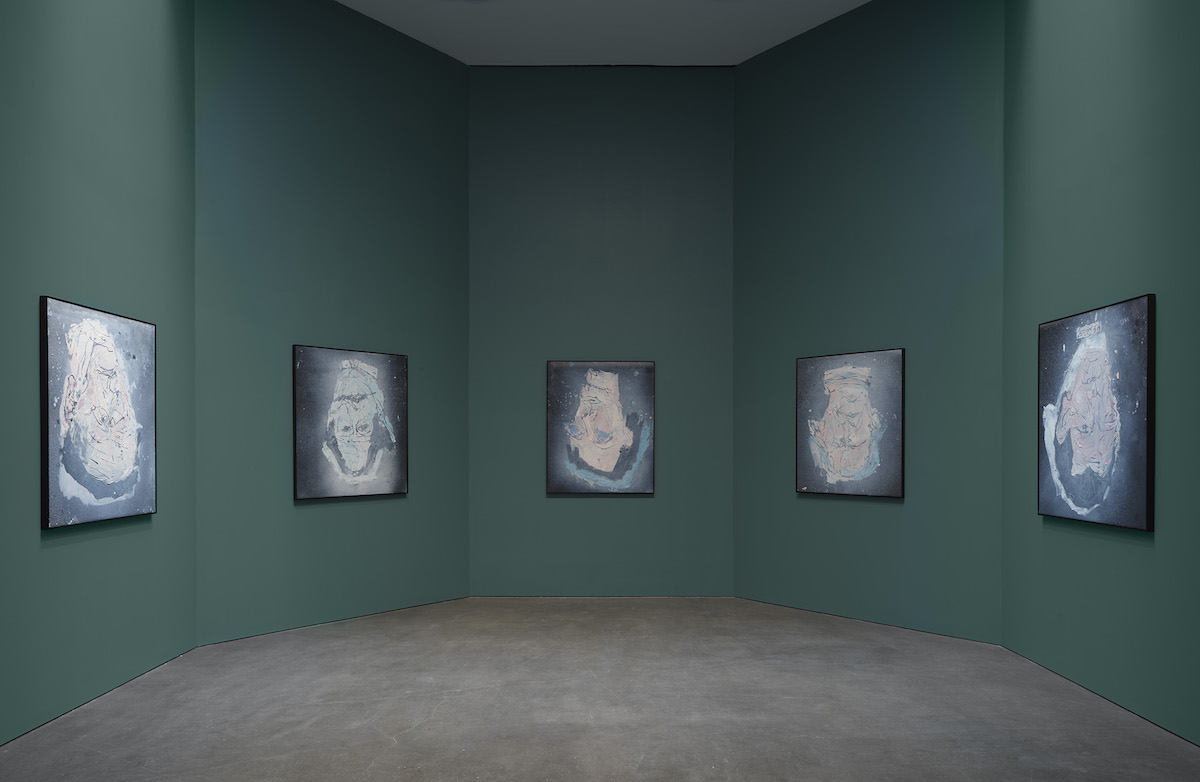[ad_1]

Installation view of “Georg Baselitz: Devotion” at Gagosian, West 24th Street, New York, through March 23.
ARTWORKS: © GEORG BASELITZ/PHOTO: ROB MCKEEVER/COURTESY GAGOSIAN
Many times over the course of five decades, Georg Baselitz has explained why, in 1969, he began to paint people, places, and things upside down, and he did yet again when I spoke with him on the morning in late January that his current exhibition, “Devotion,” opened at Gagosian in New York. As a young German art student in East Berlin during the mid-1950s, he told me, “you could paint realistically or abstractly. Realism was linked to socialism while abstraction meant you supported capitalism.” By inverting his subjects and themes, Baselitz believed he’d found a third option. His work would occupy a middle road by simultaneously being both quasi-representational and quasi-nonobjective.
You would not expect such an approach to lend itself to portraiture, but in the Gagosian exhibition, Baselitz has rendered his dozens of subjects—all of them artists—with enough fidelity to preclude viewers’ head-tilting. “Devotion,” which runs through March 23, is Baselitz paying homage to both his predecessors—Piet Mondrian, Edvard Munch, Mark Rothko—and his peers. The paintings are largely based on the artists’ own self-portraits.
What may come as a surprise to those who have followed Baselitz’s career in recent years is the fact (which Baselitz was quick to point out to me) that the only living artists depicted are women—among them Cecily Brown and Tracey Emin—all of them born in the years just before and after he held his first solo show in 1963 in Berlin. In 2013, Baselitz said in an interview, “Women don’t paint very well,” earning ire from the art world. Last spring, his costumes for the Munich Opera’s production of Richard Wagner’s Parsifal included nude body suits for the chorus of “maidens” that called attention not to youth or any alluring qualities, but instead to sagging breasts and other signs of advanced age, earning him more criticism.

Georg Baselitz, Piet M., 2018.
© GEORG BASELITZ/PHOTO: JOCHEN LITTKEMANN/COURTESY GAGOSIAN GALLERY
Arrayed in the gallery’s many rooms, the floating heads on canvas call to mind constellations in night skies. This mood is underscored by the works with dark grounds, penumbra-like effects that suggest light emanating from the orb-like heads, and networks of long, thin marks that resemble the trajectories of shooting stars. In a large space, installed salon-style, are a host of drawings that reveal Baselitz’s not-always-acknowledged gifts for line and characterization. With their variety of hairstyles and mustaches, many works of the works on paper even verge on witty caricature.
If the women paintings are an effort to salvage his reputation in the #MeToo era, they don’t come off as craven or self-serving. Anyone who is the least bit familiar with German Expressionism will recognize Paula Modersohn-Becker as the woman depicted in a light-colored picture holding a flower, as she does in her famous self-portrait of 1906–07. Similarly, for those who use the Q subway station at East 83rd Street in Manhattan, where Chuck Close’s tile portrait of Brown is embedded in a wall, Baselitz’s portrait of this remarkable painter is easy to spot too.
Taken together, the works are an acknowledgment from Baselitz of the role art and artists have played throughout his life. At 81—his birthday was the day before the Gagosian show opened—he has, by his own reckoning, become somewhat nostalgic. “I am increasingly preoccupied with my past,” he said in an interview a few years ago. It has also been a time for looking back at his own work: This past year, a full-dress retrospective of his paintings, sculptures, and works on paper spanning five-plus decades was on view at the Beyeler Foundation in Basel, Switzerland, and then the Hirshhorn Museum and Sculpture Garden in Washington, D.C.
Baselitz’s pivotal experience with Abstract Expressionism came in 1958 when he was just 20 and the Museum of Modern Art’s survey of Jackson Pollock traveled to the Hochschule der Bildenden Künste in West Berlin, where he was studying. He’d been expelled from school in East Berlin, and therefore no longer qualified for the cards that allowed him to buy staples like bread and butter—“It was like being homeless” he told me—but he managed to relocate to the side of the divided city, where, as a refugee, he qualified for a scholarship that enabled him to continue his studies. Alongside the Pollock show was another one from MoMA, the famous “New American Painting.” “It was so incredible,” he said. “I could touch it.”

Installation view of “Georg Baselitz: Devotion” at Gagosian, West 24th Street, New York, through March 23. Click to enlarge
ARTWORKS: © GEORG BASELITZ/PHOTO: ROB MCKEEVER/COURTESY GAGOSIAN
Though he was amazed by the paintings of Pollock, Clyfford Still, Philip Guston, and Willem de Kooning, all of whom are portrayed in “Devotion,” Baselitz recalled how he “felt I could not be better than they were.” Instead, he remained a figurative artist—or, as he put it to me, “I didn’t take part in this modern style. It was an existential decision. I remained an outsider.”
Portraiture isn’t new for him. He has painted portraits at critical junctures in his career. He made them as early as 1959; and later on, during the period when he began painting imagery upside down. Initially, his depictions of people were easel-size and expressionistic, indebted to Chaim Soutine and James Ensor. He distorted facial features and used a nonnaturalistic palette. Viewing those early works, you’re more aware of brushstrokes and the nature of paint than the qualities that typically help identify someone. Perhaps ironically, when he began inverting his subjects, the men and women he portrayed became more lifelike. Viewers even tried to turn their own heads upside down to see what he’d done.
These days, Baselitz continues to find inspiration for his work in history—both art’s and his own. “I always thought that what I do is real-life melancholy,” he’s said. “Being dystopian means nothing other than inventing a bad future. The utopians invent Paradise and the dystopians invent Hell. But both are futures. And my position is far away from this. I do not reflect into the distance.”
[ad_2]
Source link

